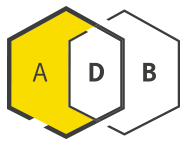
|
|
Molecular weight: 847.01
|
|
|
Iso. SMILES:
|
C[C@H]1/C=C/C=C(\C(=O)NC2=C(C3=C(C4=C(C(=C3O)C)O[C@@](C4=O)(O/C=C/[C@@H]([C@H]([C@H]([C@@H]([C@@H]([C@@H]([C@H]1O)C)O)C)OC(=O)C)C)OC)C)C5=NC6(CCN(CC6)CC(C)C)N=C25)O)/C
|
|
InChI Key:
|
AZFBLLCNOQPJGJ-VXTBVIBXSA-N
|
|
Can. SMILES:
|
CC(C)CN1CCC2(CC1)N=C3C4=C5C6=C(C)C(=C4C(=C(C3=N2)NC(=O)/C(=C\C=C\[C@H](C)[C@@H]([C@@H](C)[C@H]([C@@H](C)[C@@H]([C@H](C)[C@H](/C=C/O[C@](C)(C5=O)O6)OC)OC(=O)C)O)O)/C)O)O
|
|
InChI:
|
InChI=1S/C46H62N4O11/c1-22(2)21-50-18-16-46(17-19-50)48-34-31-32-39(54)28(8)42-33(31)43(56)45(10,61-42)59-20-15-30(58-11)25(5)41(60-29(9)51)27(7)38(53)26(6)37(52)23(3)13-12-14-24(4)44(57)47-36(40(32)55)35(34)49-46/h12-15,20,22-23,25-27,30,37-38,41,52-55H,16-19,21H2,1-11H3,(H,47,57)/b13-12+,20-15+,24-14-/t23-,25+,26+,27+,30-,37-,38+,41+,45-/m0/s1
|
|


